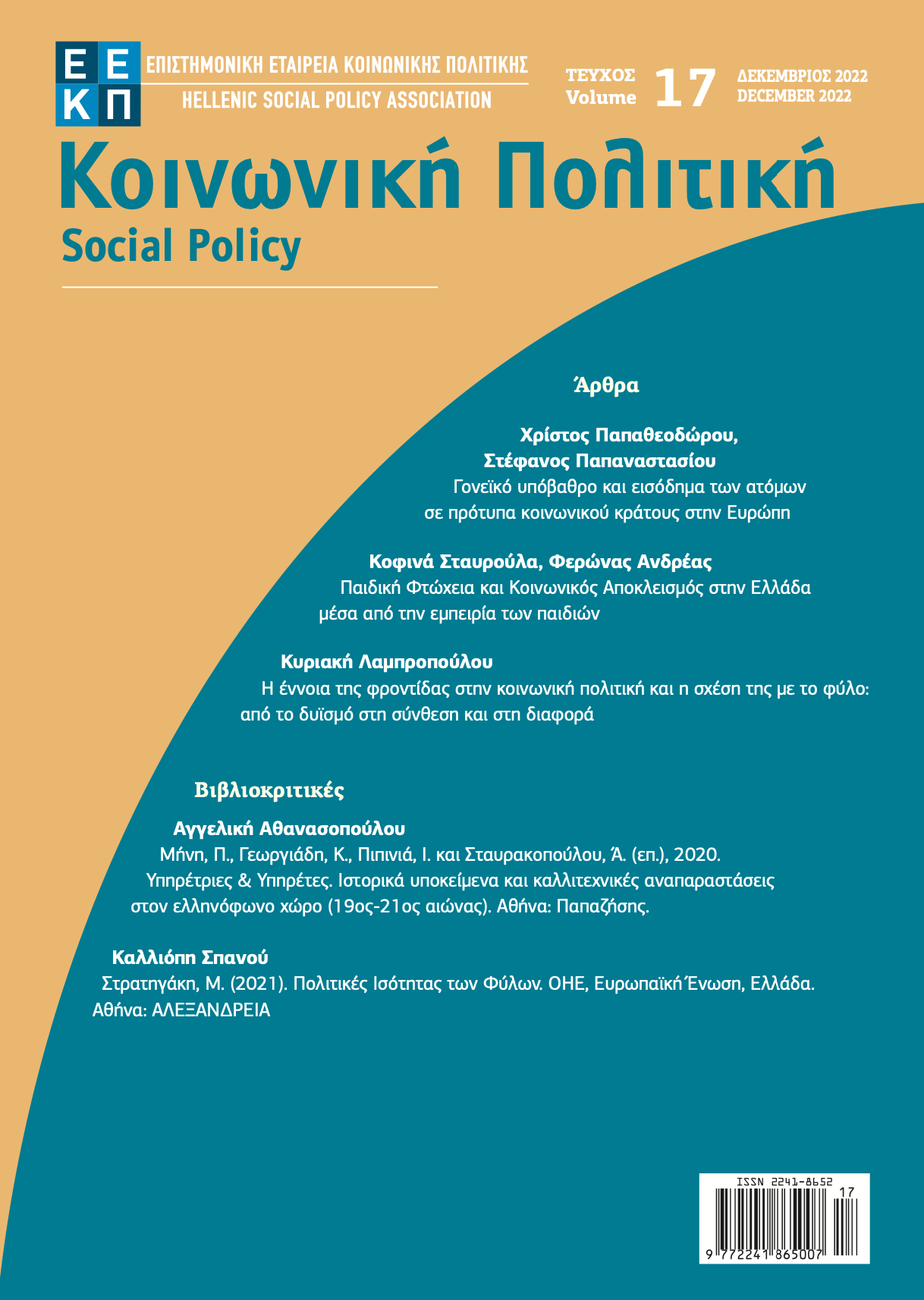Παιδική Φτώχεια και Κοινωνικός Αποκλεισμός στην Ελλάδα μέσα από την εμπειρία των παιδιών
Abstract
The subject of the article is the in-depth investigation of the child poverty and social exclusion in Greece from the children’s perspective. It presents data from an empirical child-centered research that took place in schools of poor neighborhoods of Athens, in which 432 students, aged 10-15 participated and the main research method was focus groups with triangulation via individual interviews, localized quantitative data and field observation. The research hopes to introduce the voice and perspective of children in the scientific discussion and policies for child poverty in Greece, which is dominated by adult views and statistics, leaving the real living conditions of poor children obscured. Children in the research focus on power inequality with adults as the main cause of their multiple exclusions experienced in poverty and highlight the issues of housing and spatial inequalities, abruption with childhood when forced to work in adult terms, of stigmatization and internalization of social exclusion that characterizes their social relationships.
Article Details
- How to Cite
-
Κοφινά Σ., & Φερώνας Α. (2023). Παιδική Φτώχεια και Κοινωνικός Αποκλεισμός στην Ελλάδα μέσα από την εμπειρία των παιδιών. Social Policy, 17, 15–33. Retrieved from https://ejournals.epublishing.ekt.gr/index.php/eekp/article/view/32799
- Issue
- Vol. 17 (2022)
- Section
- Articles

This work is licensed under a Creative Commons Attribution 4.0 International License.
Authors who publish with this journal agree to the following terms:
Authors retain copyright and grant the journal right of first publication with the work simultaneously licensed under a Creative Commons Attribution Non-Commercial License that allows others to share the work with an acknowledgement of the work's authorship and initial publication in this journal.
Authors are able to enter into separate, additional contractual arrangements for the non-exclusive distribution of the journal's published version of the work (e.g. post it to an institutional repository or publish it in a book), with an acknowledgement of its initial publication in this journal.
Authors are permitted and encouraged to post their work online (preferably in institutional repositories or on their website) prior to and during the submission process, as it can lead to productive exchanges, as well as earlier and greater citation of published work.








